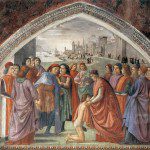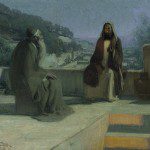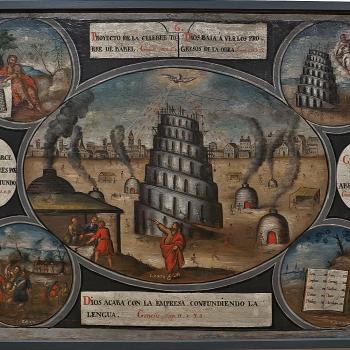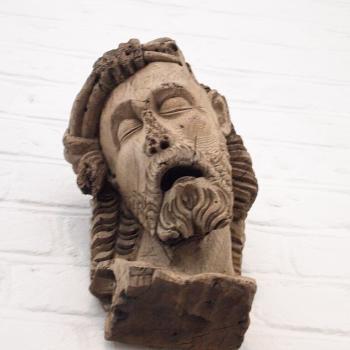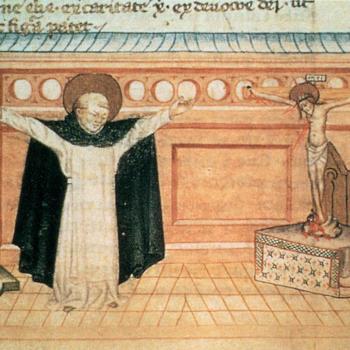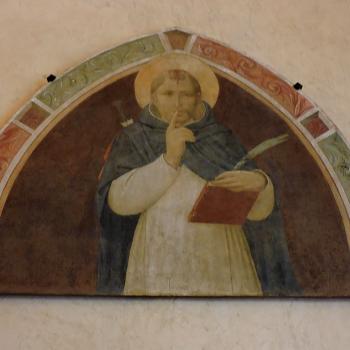Following the feast of the resurrection, and the witness of the resurrection represented by the myrrh bearing women, the Byzantine tradition continues its celebration of the resurrection with reminders of what Christ achieved through his passion and resurrection from the dead. Stories are chosen from the Gospels which are seen to have been allegorical foreshadowings of the restructuring of the created order by Christ’s eschatological integration of heaven with earth, grace with nature, by his triumph over death.
![The Pool by Palma il Giovane [Public domain], via Wikimedia Commons](https://wp-media.patheos.com/blogs/sites/637/2017/05/Palma_il_Giovane_001-255x300.jpg)
Now there is in Jerusalem by the Sheep Gate a pool, in Hebrew called Bethzatha, which has five porticoes. In these lay a multitude of invalids, blind, lame, paralyzed. One man was there, who had been ill for thirty-eight years. When Jesus saw him and knew that he had been lying there a long time, he said to him, “Do you want to be healed?” The sick man answered him, “Sir, I have no man to put me into the pool when the water is troubled, and while I am going another steps down before me.” Jesus said to him, “Rise, take up your pallet, and walk.” And at once the man was healed, and he took up his pallet and walked. Now that day was the sabbath (Jn. 5:2-9 RSV).
This story has universal value and application because it reflects upon the human condition itself. Sin has weakened us, making us spiritually paralyzed. Our will, though it remains with some potency of its own, has lost its vitality, so that we encounter the world as a kind of prison in which our sins forms the chains which keep us unable to move. Like the paralytic in John, we are weak, and yet we seek strength, we seek a miracle, desiring to have our freedom restored to us. We want to walk the path of salvation; we want to pick ourselves up, and follow Christ. And like the paralytic man, we find ourselves healed by Christ, so that we find our vitality restored, so that, once we have received Christ’s healing grace, grace which perfects nature, we will indeed be able to stand up and walk – to engage Christ, person to person, and follow where he should lead us.
The story from John talks about a pool surrounded by invalids. When Jesus comes to the pool, he healed the paralytic; likewise, we find ourselves going to a pool, the waters of baptism, and receive Christ’s healing grace upon our soul. Thus, the story not only foreshadows the kind of healing Christ will be able to give to us, liberating us from our spiritual paralysis, we see in it an indication of the ordinary means Christ desired the church to use in order to share his healing grace. Humanity had long waited in its sin for this spiritual cure which was about to take place through the work of Jesus Christ. The paralyzed man himself represented the state of humanity before Christ, and his healing, what was soon to take place with humanity in the death and resurrection of Christ. Thus, St. John Chrysostom explained:
What manner of cure is this? What mystery doth it signify to us? For these things are not written carelessly, or without a purpose, but as by a figure and type they show in outline things to come, in order that what was exceedingly strange might not by coming unexpectedly harm among the many the power of faith. What then is it that they show in outline? A Baptism was about to be given, possessing much power, and the greatest of gifts, a Baptism purging all sins, and making men alive instead of dead. These things then are foreshown as in a picture by the pool, and by many other circumstances.[1]
As the healing occurred on the Sabbath, we also get a sense of Jesus’ fulfillment of the Sabbath itself in his day with the dead, Holy Saturday, on which he had the perfect Sabbath rest which works wonders for the world. Thus, Chrysostom continued with his demonstration as to how the story in the Gospels relates to the restoration of humanity which it signified:
First then, as I before said, He causes defilements of our bodies, and afterwards infirmities of different kinds, to be done away by water. Because God, desiring to bring us nearer to faith in baptism, no longer heals defilements only, but diseases also. For those figures which came nearer [in time] to the reality, both as regarded Baptism, and the Passion, and the rest, were plainer than the more ancient; and as the guards near the person of the prince are more splendid than those before, so was it with the types. And “an Angel came down and troubled the water,” and endued it with a healing power, that the Jews might learn that much more could the Lord of Angels heal the diseases of the soul. Yet as here it was not simply the nature of the water that healed, (for then this would have always taken place,) but water joined to the operation of the Angel; so in our case, it is not merely the water that works, but when it has received the grace of the Spirit, then it puts away all our sins. [2]
Before the grace of Christ, our soul is weak, and so is easily directed and manipulated by the inordinate impulses of the body. We might have been able to grasp a little of the greater good which we failed to achieve. A part of us might have desired to be able to do such good. And yet, we were unable to do it, and our passions and desires coming from the fallen way of life influenced us, directed us, guided us to seek after impermanent pleasures of the body and soul, always seeking but never achieving permanent peace as a result. Weakened, as we were, often seeking the good but yet finding the habits of sin keeping us chained down so that we do not do the good which we desired, we find ourselves in need of help, of Christ’s grace, if we truly want to be good and receive the beatitude of such goodness. Thus, St. Anthony of Padua described how our soul was like the poor man, Lazarus, before the gates of the rich man, the body, so that within us we found ourselves rich in sin and poor in virtue:
Sick, because it is destitute of the strength that comes from virtue; blind, because it is deprived of the light of reason; lame in each foot, good will and good works; withered for lack of the moisture of contrition. Full of these sores it [the soul -HK] lies at the rich man’s gate [the body with its five senses- HK], desiring to be fed with the crumbs that fell from the rich man’s table. [3]
Christ came to restore us, to take us from our crippled spiritual condition and lift is up, to help us walk again. Through his healing grace, given to the whole of creation through his passion and resurrection from the dead, we can receive what we need from him so we will be capable of acting in and with him to the accumulation of virtue and the spiritual strength which such virtue gives to us. We need his help, his grace, to heal us, but then we need to pick ourselves up and follow him, to walk with him, to grow and not let our spiritual strength be lost once again due to negligence. Sin caused us to lose strength, and now, thanks to Christ, we can go to the pool of baptism and be lifted up, washed clean from our sins and made spiritually pure. Likewise, if and when we find ourselves struggling against sin, when we find concupiscence still has strength to hold us down, we need to continue to cry out to Christ:
By Your divine intercession, O Lord, / as You raised up the paralytic of old, / so raise up my soul, paralyzed by sins and thoughtless acts; / so that being saved I may sing to You: / “Glory to Your power, O compassionate Christ!” (Kontakion Sunday of the Paralytic)
It is with that grace Christ come to meet us, even today. We read, in the light of the resurrection, the apostles becoming faithful servants of Christ, acting in and through his power and authority, helping others to be restored in Christ. Indeed, they are shown to continue with miracles representing Christ’s healing of the soul through bodily healing, as when Peter healed Aeneas, a man who had been bedridden for years:
Now as Peter went here and there among them all, he came down also to the saints that lived at Lydda. There he found a man named Aeneas, who had been bedridden for eight years and was paralyzed. And Peter said to him, “Aeneas, Jesus Christ heals you; rise and make your bed.” And immediately he rose. And all the residents of Lydda and Sharon saw him, and they turned to the Lord (Acts 9:32-34 RSV).
Christ continues to work in the world, to heal the souls who willingly come for his grace; he has ministers chosen to work with us and help us receive the medicine our souls. He has not abandoned us. Let us, therefore, remember the work of Christ and how his resurrection is not a one-time event which is now a part of the past, but the announcement of the new creation, and how we, having grown old and weak in sin can still partake of that new creation and be healed for all eternity. Christ is risen – let us therefore enter into his life and rise with him as well!
[1] St John Chrysostom, Homilies on John in NPNF(14): 126.
[2] Ibid., 126.
[3] St. Anthony of Padua, Sermons for Sundays and Festivals. Volume II. trans. Paul Spilsbury (Padova: Edizioni Messaggero Padova, 2007), 16-17.
Stay in touch! Like A Little Bit of Nothing on Facebook:
A Little Bit of Nothing


